Archive for category Web maps and Storyboards
Storyboard 2 – Jokha
Posted by Jokha Al Adi in Web maps and Storyboards on March 25, 2014
This storyboard illustrates how you don’t need to create an account with Koh.Tu.Me in order to receive event invitations.
Created using: StoryBoardThat.com.
StoryBoard – Jokha
Posted by Jokha Al Adi in Web maps and Storyboards on March 24, 2014
Business Use Case Scenarios & UML – Sami
Posted by Samantha Kanza in UML diagrams, Web maps and Storyboards on March 19, 2014
This blog post will detail the Use Case Scenarios and UML diagrams for pleasure events.
NB: If you click on the images then they will direct you to a bigger version of that image.
Conferences
This is the Use Case Scenario and matching UML diagram for a Conference:
Use Case Scenario
|
Use Case Section |
Comment |
|
Use Case Name |
Organise Conference Event |
|
Primary Actor |
Conference Attendee
|
|
Stakeholders |
Conference Attendee wants to get to the Conference. Conference Organiser wants the attendee’s to get to the Conference.
|
|
Preconditions |
The Conference must exist and the attendee must know where/when it is.
|
|
Success Guarantee
Main Success Scenario
Extensions (Other Scenarios of Success or Failure) |
The Conference Attendee arrives at the correct Conference at the correct time.
Extensions:
|
UML Diagram
Business Day Event
This is the Use Case Scenario and matching UML diagram for a Business Day Event:
Use Case Scenario
|
Use Case Name |
Organise Business Day Event |
|
Primary Actor |
Business Event Attendee |
|
Stakeholders |
Business Event Attendee wants to get to the business event on time. Business Event Organiser wants the attendees to get to the business event on time. |
|
Preconditions |
The Business Event must exist and the attendee must know where/when it is. |
|
Success Guarantee
Main Success Scenario
Extensions (Other Scenarios of Success or Failure) |
The Business Event Attendee arrives at the correct event place at the correct time.
Extensions:
|
UML Diagram
Academic Event
This is the Use Case Scenario and matching UML diagram for an Academic Event:
Use Case Scenario
|
Use Case Name |
Organise Academic Event |
|
Primary Actor |
Academic Event Attendees |
|
Stakeholders |
Academic Event Attendees want to get to the event location. Academic Event Organiser wants the attendees to get to the event location. |
|
Preconditions |
The event must exist and the attendees must know where/when it is. |
|
Success Guarantee
Main Success Scenario |
The Attendee arrives at the correct place at the correct time.
|
UML Diagram
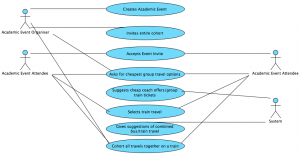
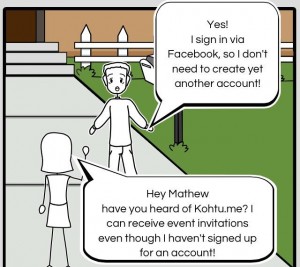
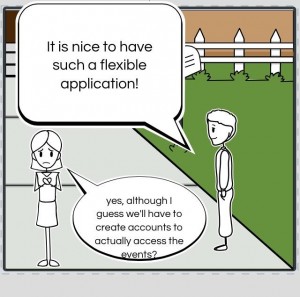
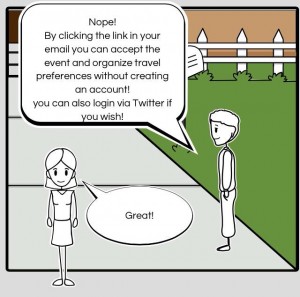






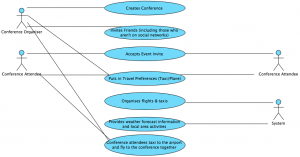
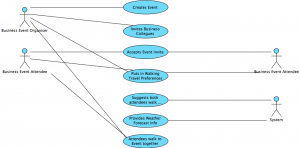
Recent Comments